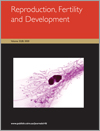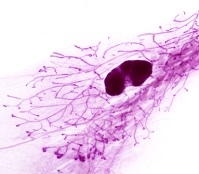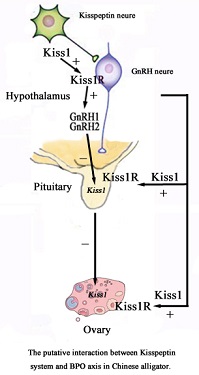Reproduction, Fertility and Development
Volume 32
Number 8 2020
Men with total globozoospermia are naturally infertile, and men with partial globozoospermia have reduced fertility or are even infertile. It needs to be determined whether cases of partial globozoospermia and total globozoospermia are variations of the same syndrome. It seems that despite the phenotypic similarities between these disorders, the corresponding genetic factors are different.
Anti-Müllerian hormone receptor 2 (AMHR2) is expressed in the tunica mucosa of the ampulla and isthmus, and in the epithelium of uterine glands and the luminal epithelium of the endometrium of heifers and cows. AMHR2 abundance did not differ among oestrous phases or among old Holsteins and young and old Wagyu females.
Cattle undergo numerous stress situations during their lives that can affect fertility and production. Ovulation is a sensitive event that involves numerous molecules, including enzymes like metalloproteases and their regulators. This study evaluated the activity and expression of these molecules and the effects of adrenocorticotrophic hormone on the bovine ovary in pro-oestrus. We found changes that could alter the ovulation process in response to stress.
Interventions during pregnancy can have effects throughout life, a concept known as metabolic programming. This study is the first to assess the antioxidant content in reproductive organs of animals subjected to caloric restriction (CR) during intrauterine development. CR is known to diminish food intake without impairing nutrient consumption. Although known to prolong the lifespan in some species, CR may have a major role in modulating the antioxidant defences of germline cells in adults of reproductive age.
Foxp3 is a transcription factor found in both immune cells and in the mammary gland that affects mammary cancer susceptibility. We investigated whether Foxp3 also has a role in healthy mammary gland development and function by studying mice lacking a copy of the Foxp3 gene. Our studies showed no difference in mammary glands of these mice and this suggests that Foxp3 is not an essential regulator of mammary gland development.
This study reports that peroxiredoxin (Prdx) 2, an antioxidant enzyme, regulates the ovulatory process in mice. Prdx2 played a role in cumulus expansion and oocyte maturation. Clinical use of Prdx2 may contribute improve programs in infertility clinics.
To date, there are no reports of kisspeptins as key regulators of crocodilian reproduction. This study investigated the reproductive function of Alligator sinensis by cloning and expression profiling the Kisspeptin1 (Kiss1) and Kiss1 receptor (Kiss1R) genes. It is important to understand when A. sinensis reaches sexual maturity and reproduction in this species for restoration of the wild population.









